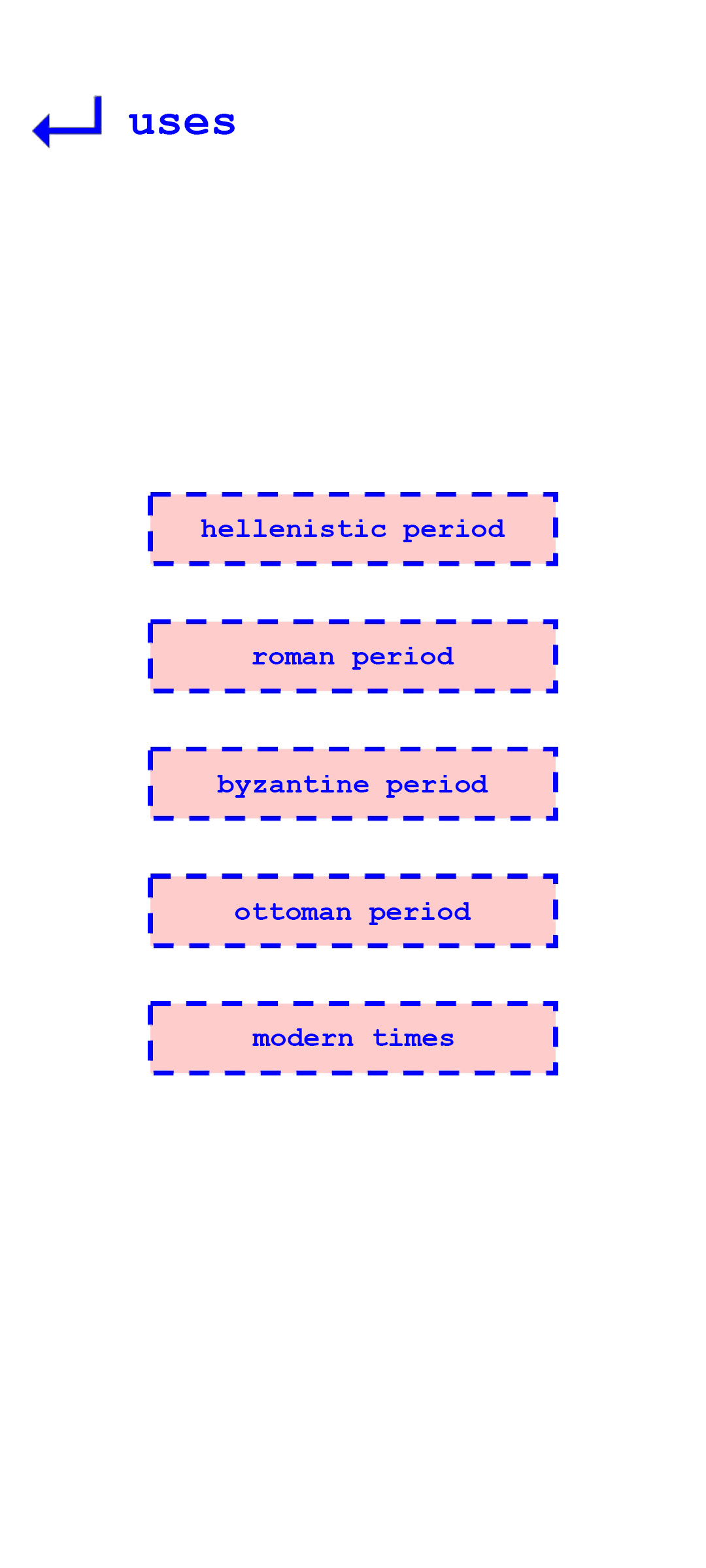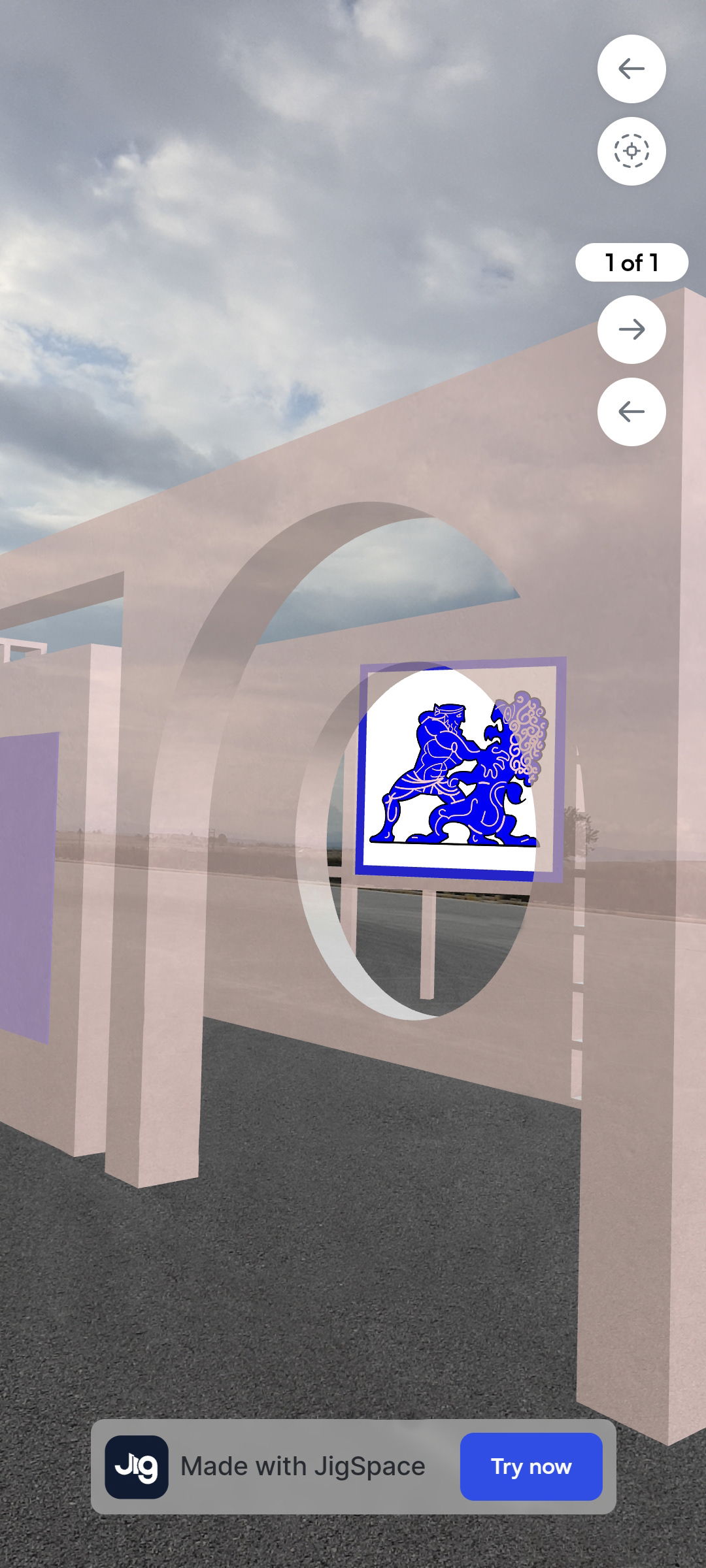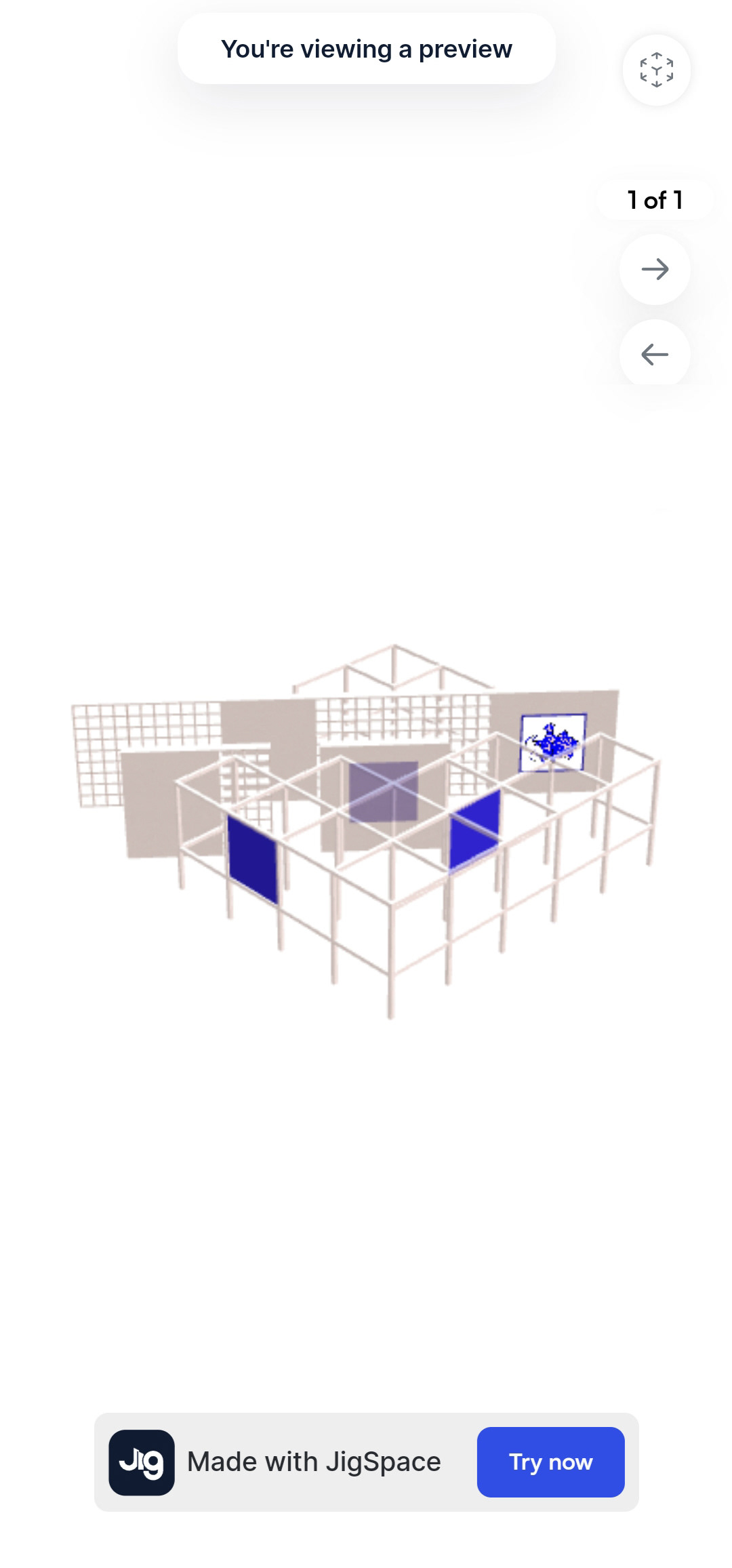[cultural heritage & digital technologies]
Exploring Eleftheria: Augmented spatial narration
[keywords]
augmented reality, cultural heritage, application, game, a' ancient theatre of Larissa, interactive narration, digital spatial expansion, cultural data, edutainment media, serious game, pervasive game
[abstract]
The present diploma thesis proposes the use of digital technologies to develop a cultural heritage application in the form of a game. This game utilizes interactive storytelling as a tool and aims to highlight the first ancient theater of Larissa. By studying the archaeological site and using techniques such as augmented reality, different perspectives of the theater are explored, redefining this cultural object. More specifically, an interactive environment is created through the design of an augmented reality application, which runs in-situ. This game offers a linear tour of six points in the archaeological site of the theater. Narratively following the ancient dramatic scheme “hubris, ate, nemesis, tisis, catharsis”, the ancient Greek theater as an institution is explored, along with the first ancient theater of Larissa and the ancient festival of the Eleftheria, which took place at this location. The reference to Eleftheria, utilized narratively, revives and preserves the intangible cultural heritage of the theater. This specific cultural heritage object was chosen because, as it has not yet been completely revealed, it continually engages the public of the city, demonstrating a remarkable range of cultural heritage with potential for development. At the same time, it is the most representative landmark of the city. Questions are also raised regarding the ability of the narrative element to serve as a useful tool for the projection of cultural heritage, and regarding the approach to the design of the augmented space as an architectural problem. By combining the viewing of sites of cultural importance with the use of augmented reality, new ways of knowledge and new spatial extensions are created, redefining the cultural experience of the viewer-participant. Ultimately, the narrative rendered through interaction, and the very participation and willingness of the user, leads the theater to acquire a new experiential character, modern and changeable.
[methodology]
The chosen methodology aims to initially present the "raw materials" of the project: the location [the first ancient theater of Larissa], the chosen technology [augmented reality], and the cultural heritage combined with the narrative element. It then analyzes how these "raw materials" are integrated and combined, ultimately examining the resulting application.
intangible part: It consists of an application that includes the game, the augmented reality, and the narrative. This creates an interconnection on three different levels: narrative design, path planning, and AR design. The narrative design is based on a primary reference, the history and historical knowledge of Eleftheria, representing the intangible cultural heritage of the theater. This reference is then studied in terms of its applicability in fields where the digital, the real, and the narrative converge.
tangible part: It consists of a design template, including a classic series of drawings such as plans, elevations, sections, illustrations, and more, as well as a topographic mapping of the theater in its current form. This part provides a better understanding of the designed augmented space.
[interesting excerpts]
"The first ancient theater of Larissa was built during the first half of the 3rd century BC, during the reign of the Macedonian king Antigonus II Gonatas. After the death of Alexander the Great, Thessaly became part of the Kingdom of Macedonia during the Hellenistic era. The theater, designed by the architect Pollux from Larissa, is one of the largest ancient theaters in Greece, with a capacity of over 10,000 spectators. It features the typical structure of a Hellenistic theater, consisting of three main elements: the concave, the orchestra, and the scene."
"In honor of Eleftherios Zeus and in memory of the liberation of Thessaly from the Macedonian yoke, the Eleftheria festival was established in 196 BC. This celebration, held every four years in Larissa, the seat of the "Thessalian League", was attended by representatives from all the Thessalian cities. The fame of this festival spread far beyond the borders of Thessaly, attracting famous athletes and artists from across the ancient Greek world, Asia Minor, and Italy."
"Augmented reality will continue to transform the perception of built and designed spaces. Therefore, the involvement of architects is essential to explore the possibilities offered by augmented reality and to design spaces that integrate the real and the virtual. Given their unique design skills and space-making knowledge, architects are ideally positioned to navigate this new intersection between the virtual and the real. In other words, architects and artists have the opportunity to consider the "invisible" virtual space of digital data as a substance that requires a structure, a politics, and a poetics, rather than just a void."
"The aim of this project, regarding the selected theoretical question, is to focus on the experience of the human subject in the augmented space through the use of the narrative element within an augmented reality application, which seeks to promote and strengthen cultural heritage. Additionally, it examines how the incorporation of narrative serves as a valuable tool for the promotion of cultural heritage. This evolving theoretical framework provides a new, expansive perspective, explores the processes of narrative design for imagined spaces, and approaches the design of augmented space as an architectural challenge."
"The current design was chosen to contrast with the architecture of the theater by adding a playful character that aligns with the narrative of the game, while maintaining the geometry utilized in the theater's natural design. Three organizational principles were selected for this project: points, lines, and surfaces. Starting with the points, six spots within the archaeological site were chosen based on the theater's history and architecture, forming the linear path for the user. These points provide dimensional and organizational qualities to the theater, serving as reference markers. The lines represent the defined paths of movement within the site and at the six selected points. The surfaces create a broken virtual topography connected to the linear path. A challenge for the chosen design was combining classical architecture, which has characteristics such as locality, history, and memory, with virtual architecture, whose characteristics are non-locality, ahistoricity, and the absence of a specific material form. The aim was to create a hybrid architecture that responds to the evolution of the modern world and a cultural space where the natural ancient coexists with the artificial modern in a state of continuous reshaping and discovery."
"In this project, augmented reality does not cover the entire physical space but occupies a well-defined part of it. Additionally, the virtual environment of the application facilitates the visitor's exploration of the historical monument through interactive navigation options. These options enable the visitor to integrate archaeological facts and historical information into a cohesive narrative. The creation of this interactive story serves a broader educational purpose. Moreover, by presenting the monument's knowledge as interconnected information points within an integrated story structure, the application dynamically expands as the user interacts with it. In essence, this application moves away from static presentation systems that offer a limited number of stories or informational resources."
[narrative]
To create the narration, documented historical information about the theater is considered, along with classical myths about the gods:
1. In ancient times, theaters and performances were typically dedicated to the god Dionysus. The construction of ancient theaters and the staging of performances are directly linked to the worship of Dionysus.
2. In ancient Larissa, in 196 BC, the "Eleftheria" festival was established in honor of Eleftherios Zeus. These games commemorated the liberation of Thessaly from the Macedonians.
3. When gods are displeased with mortals, their typical response is to make life difficult for them.
4. When the interests and wills of the gods conflict with each other, mortals involved in the conflict often become scapegoats.
Game plot: We find ourselves in ancient Larissa, within the first ancient theater, during the 2nd century BC, in the Roman period. The god Dionysus is displeased with the ancient Larissaians because, although the theatrical performances and the theater are dedicated to him, the festival of the Eleftheria, held in the theater, honors Eleftherios Zeus. Consequently, Dionysus prevents the inhabitants of ancient Larissa from using the theater for its usual functions —such as theatrical performances and assemblies of the Thessalian League— and punishes them with the ancient dramatic scheme "hubris - ate - nemesis - tisis - catharsis", until the Eleftheria are dedicated to him. Zeus, desiring that the Eleftheria remain dedicated to his name, thwarts the citizens' attempts by breaking the celebration into five pieces and hiding them within the theater to hinder their efforts.
Objective of the game: With the guidance of Hermes, the user —a citizen of ancient Larissa—navigates the theater, following a predetermined path that leads to strategic spots within the archeological area. As the user explores both the virtual and physical dimensions of the theater, their objective is to discover and collect the five clues integral to the Eleftheria festival. Along this journey, rich information about the ancient theater and its significance is provided, offering insights into Larissa's cultural heritage. Each of the five clues is concealed within designed spots of architectural significance, prompting the user to engage with and navigate through these virtual spaces. Upon successfully collecting all five clues and completing the Eleftheria, they are dedicated to Dionysus, resulting in his relenting and the restoration of access to the theater for the ancient Larissaians. Additionally, at each spot along this linear route, the user encounters supplementary actions that contribute to the narrative, corresponding to the stages of the dramatic scheme of hubris, ate, nemesis, tisis, and catharsis, representing the consequences of Dionysus's anger. These distinct steps in the structure of a theatrical play are translated into distinct spatial steps within the game's narrative, transforming into the stages the user experiences while navigating the space.
[general drawings]

topographic mapping

abstract logical diagram of the application

site plan

the linear path

diagrammatic ground plan

ground plan

north elevation

sectional elevation #1

sectional elevation #2

sectional elevation #3
[visualizations]

visualization

visualization

visualization

visualization

visualization

visualization
[demonstration of the application]
To build the app, the free version of the Unity game engine, AR Foundation, and Rhinoceros 3D were used. The application employs marker-based AR. The mobile device's camera captures an image of the physical environment, and the software recognizes each of the six QR codes as markers. The software then activates and renders the 3D object. Thus, the three-dimensional spots are placed by scanning the QR codes in the real environment.

thumbnail

main menu

historical accuracy

uses

uses - hellenistic period

architectural parts

architectural parts - koilon

timeline

dramatic scheme

dramatic scheme - hubris

Hermes in the introduction

the 1st qr code

exploring the 1st spot

exploring the 1st spot

wrong selection

wrong selection

wrong selection - restart

collection of the main image
[sketches]

the main map/image completed

Zeus and Dionysus fighting over the a' ancient theatre of Larissa

Hermes in the introduction

Hermes in the game

the amphora-life

1st spot sketch

2nd spot sketch

3rd spot sketch

6th spot sketch
[experiments]
Prior to developing the application, preliminary experiments were conducted using the augmented reality app JigSpace to evaluate the overall design concept. These experiments facilitated the exploration of the virtual space and offered insights into user perception of both physical and virtual environments.

introduction

introduction

hubris

hubris

ate

ate

nemesis

nemesis

tisis

tisis

catharsis

catharsis
[model photos & images]
The model reflects the overall project with a physical site map of the archaeological site, including the theater, and a two-dimensional engraving of the virtual design footprint. Using the Zappar augmented reality application, the physical model serves as a marker for superimposing the virtual design through image recognition. The design is accessed via a mobile device by scanning a QR code on the physical model.

the physical model


the physical model

the physical model

the physical model

the augmented physical model

the augmented physical model

the augmented physical model

the printed booklet
[demo videos]
Demo video part 1 [https://youtu.be/5c_XTClyrpU]
Demo video part 2 [https://youtu.be/Mrnqm40Aez0]
Demo video part 3 [https://youtu.be/IRj0gp_9rL8]
[indicative bibliography]
Azuma, R. T. (1997). A Survey of Augmented Reality. Presence: Teleoperators and Virtual Environments, 06(04), 355–385.
Béquignon, G. (1935). Le théâtre de Larissa en Thessalie. In Mélanges offerts à M. Octave Navarre par ses élèves et ses amis (1st ed., pp. 1–10). Toulouse: Edouard Privat.
Giovannini, J. (2021). Architecture Unbound: A Century of the Disruptive Avant-Garde. New York: Rizzoli.
Johnson, P., & Wigley, M. (1988). Deconstructivist Architecture. New York: The Museum of Modern Art. Retrieved from: https://www.moma.org/calendar/exhibitions/1813
Kandinsky, W. (1947). Point and Line to Plane. New York: Solomon R. Guggenheim Foundation.
Karagkounis, D. L., & Tsanaktsidou, S. D. (2021). Digital Documentation and 3D Modelling in the Restoration of the First Ancient Theatre of Larissa, Greece. In I., Vayas, F.M., Mazzolani (Eds.), International Conference on Protection of Historical Constructions. PROHITECH 2021. Lecture Notes in Civil Engineering (vol. 209, pp. 586–593). Cham: Springer.
Manovich, L. (2002). The Poetics of Augmented Space. 01-28. Retrieved from: http://manovich.net/index.php/projects/the-poetics-of-augmented-space
McLuhan, M. (1994). Understanding Media; The Extensions of Man. London: The MIT Press.
Milgram, P., & Kishino, F. (1994). A Taxonomy of Mixed Reality Visual Displays. IEICE Transactions on Information and Systems, E77-D(12), 1321–1329.
Tschumi, B. (1994). The Manhattan Transcripts: Theoretical Projects (2nd ed.). London: Academy Editions.
[project info]
student: Marianna Zioga
year: 2024
institution: University of Thessaly, Department of Architecture
supervisors: Spiros Papadopoulos [http://www.spirospapadopoulos.net/en] & Vassilis
Bourdakis [http://www.arch.uth.gr/en/staff/V_Bourdakis]